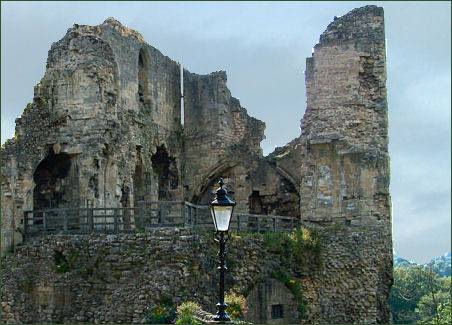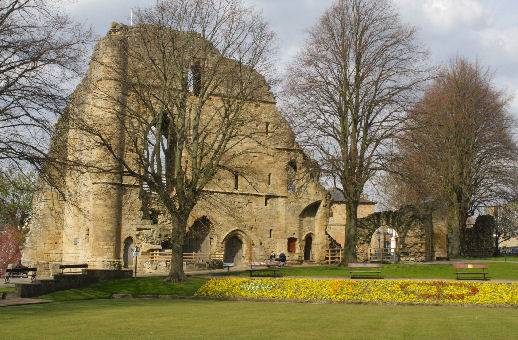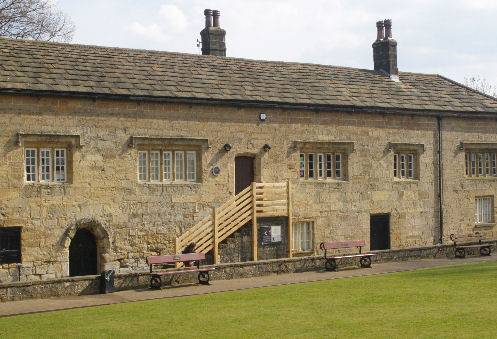Knaresborough Castle
OS grid reference:- NZ 170 009
 A stronghold of medieval kings, Knaresborough Castle was built in around 1100 in a stunning location on a cliff top overlooking the River Nidd.
A stronghold of medieval kings, Knaresborough Castle was built in around 1100 in a stunning location on a cliff top overlooking the River Nidd.
The first reference to the castle occurred in 1129 when it was recorded that 11 pounds was spent on the castle by its custodian Eustice Fitz-John. In the 1170's Hugh de Moreville, one of the knights responsible for the murder of Thomas Beckett, sought refuge there, along with his followers, following the assassination of Archbishop Beckett in Canterbury Cathedral.
In 1205 King John took over the castle and spent £1,290 on improvements to the building. He was said to have adored hunting in the surrounding Forest of Knaresborough. His improvements included the excavation or enlargement of the moat. The remains of this great dry ditch can still be seen around the southern and northern halves of the castle today.
The castle was rebuilt between 1307 and 1312 by John's grandson, King Edward I and later completed by his son Edward II. John of Gaunt, Duke of Lancaster, the son of Edward III, acquired the castle in 1372, it remains part of the Duchy of Lancaster to the present day. Queen Phillipa, wife of Edward III, received the Honour and Castle of Knaresborough as part of her marriage settlement, she transformed the castle into a true royal residence.
The castle consisted of two walled baileys one positioned behind the other, the outer bailey stood on the town side and the inner bailey on the cliff side. The enclosure wall had solid towers along its length, a pair of towers, still visible to the present day, once formed the main gate. At the junction between the inner and outer baileys, on the north side of the castle stood a tall five-sided keep, the eastern parts of which have now been pulled down.
During the English Civil War, Knaresborough Castle was besieged by the Parliamentarians for six months in 1644 before it was ultimately surrendered by its Royalist defenders after part of the curtain wall was destroyed by cannon fire. It was later slighted on the orders of Parliament in 1648. Much of the stone was taken and reused in local buildings. Amost the entire circuit of the curtain wall was destroyed, as were all the buildings in the grounds, with the exception of the Courthouse. The King’s Tower was in the process of demolition when the townspeople of Knaresborough petitioned Parliament to allow them to maintain it as a prison. Demolition was halted and the Tower was left standing. The King’s Tower and Courthouse continued to serve as prison and courthouse for some time.


The castle ruins are now open to the public and the grounds are used as a public leisure space, with a bowling green and putting green open during the summer months. It is also used to host to frequent events. The Courthouse Museum is housed in the Castle's oldest building where visitors can learn about Knaresborough's royal residents, and infamous locals.
